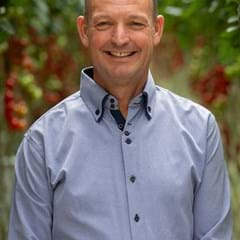The subject of energy has always been very important in cultivation. But the current high energy prices are forcing Horti-Consult advisors and growers to look even more closely at how they can continue quality growing with a lower energy consumption. This brings plenty of challenges, and it is important to work with the cultivation expert and make any adjustments needed on time while maintaining that feeling for the crop. Last year we saw the tendency to adjust the growing to the lowest possible energy input by using an even lower minimum temperature less CO2. The latter, as most people know, results in a lower production, especially in tomato and cucumber crops which are highly sensitive. As associated problem is that lower greenhouse temperatures mean higher humidity for the crops, which creates an excellent breeding ground for mould. My recommendation is that growers air more to get a lower humidity in the greenhouse. Other measures that the growers can take are to use the first or second screen more often to retain the heat inside, or to install a double screen if there is only one screen. External effects such as light and humidity can also play a greater role in heating and dehumidifying the climate at different points in the day and in the cultivation phase. Another important factor is that adjusting the energy can also impact other cultivation systems such as the amount and times of irrigation. Given the available energy, several cultivation companies have opted to plant in several phases this year. Further, in terms of lighting, we are looking more at the time of lighting and the number of hours of lighting. On top of this, minimal use is being made of Son-T lamps in favour of LED lighting.
For me, giving cultivation advice is always customised. We draft plans with the people responsible for the cultivation. These plans are now more focused on returns rather than the highest production. In my role as advisor, I also receive many questions from growers as we visit a lot of other companies and can see how other cultivation companies handle these challenges. The labour available is also becoming increasingly more relevant in taking decisions such as the distance between plants, the species grown, and the planting times.
I not only advise companies in the Netherlands and Belgium, and about 10% of my clients are abroad. As it is not possible to visit these companies every week, I do it through online consultations/meetings and have been doing this for more than 20 years. Actually, for much longer than recently when we all started meeting through Teams and Zoom. The companies there too experience challenges with energy, diseases and pests. There are sometimes issues abroad that we do not have here, but we may be able use the experience accumulated in other cultivation regions at some point. This type of exchange is useful and is a great added value for the area in which I work.
There are plenty of challenges, not only in horticulture, but in general in the world around us. These challenges keep us all on our toes.

